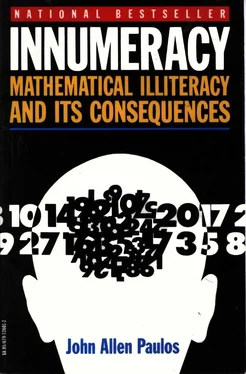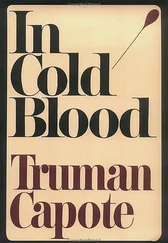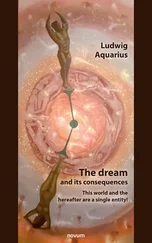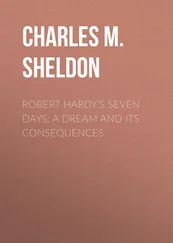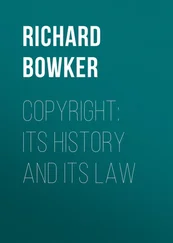The philosopher Willard Van Orman Quine goes even further and maintains that experience never forces one to reject any particular belief. He views science as an integrated web of interconnecting hypotheses, procedures, and formalisms, and argues that any impact of the world on the web can be distributed in many different ways. If we're willing to make drastic enough changes in the rest of the web of our beliefs, the argument goes, we can hold to our belief in the efficacy of the above diet, or indeed in the validity of any pseudoscience.
Less controversial is the contention that there are no clear-cut, easy algorithms that allow us to distinguish science from pseudoscience in all cases. The boundary between them is too fuzzy. Our unifying topics, number and probability, do, however, provide the basis for statistics, which, together with logic, constitutes the foundation of the scientific method, which will eventually sort matters out if anything can. However, just as the existence of pink does not undermine the distinction between red and white, and dawn doesn't indicate that day and night are really the same, this problematic fringe area, Quinian arguments notwithstanding, doesn't negate the fundamental differences between science and its impostors.
CONDITIONAL PROBABILITY, BLACKJACK, AND DRUG TESTING
One needn't be a believer in any of the standard pseudosciences to make faulty claims and invalid inferences. Many mundane mistakes in reasoning can be traced to a shaky grasp of the notion of conditional probability. Unless the events A and B are independent, the probability of A is different from the probability of A given that B has occurred. What does this mean?
To cite a simple example, the probability that a person chosen at random from the phone book is over 250 pounds is quite small. However, if it's known somehow that the person chosen is over six feet four inches tall, then the conditional probability that he or she also weighs more than 250 pounds is considerably higher. The probability of rolling a pair of dice and getting a 12 is 1/ 36 . The conditional probability of getting a 12 when you know you have gotten at least an 11 is 1/ 3. (The outcomes could only be 6,6; 6,5; 5,6 and thus there's one chance in three that the sum is 12, given that it's at least 11.)
A confusion between the probability of A given B and the probability of B given A is also quite common. A simple example: the conditional probability of having chosen a king card when it's known that the card is a face card-a king, queen, or jack-is 1/ 3 . However, the conditional probability that the card is a face card given that it's a king is 1, or 100 percent. The conditional probability that someone is an American citizen, given that he or she speaks English, is, let's assume, about 1/ 5 . The conditional probability that someone speaks English, given that he or she is an American citizen, on the other hand, is probably about 19/ 20or.95.
Consider now some randomly selected family of four which is known to have at least one daughter. Say Myrtle is her name. Given this, what is the conditional probability that Myrtle's sibling is a brother? Given that Myrtle has a younger sibling, what is the conditional possibility that her sibling is a brother? The answers are, respectively, 2/ 3and 1/ 2 .
In general, there are four equally likely possibilities for a family with two children-BB, BG, GB, GG, where the order of the letters B (boy) and G (girl) indicates birth order. In the first case, the possibility BB is ruled out by assumption, and in two of the three other equally likely possibilities, there is a boy, Myrtle's brother. In the second case, the possibilities BB and BG are ruled out since Myrtle, a girl, is the older sibling, and in one of the remaining two equally likely possibilities, there is a boy, Myrtle's brother. In the second case, we know more, accounting for the differing conditional probabilities.
Before I get to a serious application, I'd like to mention another con game which works because of confusion about conditional probability. Imagine a man with three cards. One is black on both sides, one red on both sides, and one black on one side and red on the other. He drops the cards into a hat and asks you to pick one, but only to look at one side; let's assume it's red. The man notes that the card you picked couldn't possibly be the card that was black on both sides, and therefore it must be one of the other two cards-the red-red card or the red-black card. He offers to bet you even money that it is the red-red card. Is this a fair bet?
At first glance, it seems so. There are two cards it could be; he's betting on one, and you're betting on the other. But the rub is that there are two ways he can win and only one way you can win. The visible side of the card you picked could be the red side of the red-black card, in which case you win, or it could be one side of the red-red card, in which case he wins, or it could be the other side of the red-red card, in which case he also wins. His chances of winning are thus 2/ 3The conditional probability of the card being red-red given that it's not black-black is 1/ 2 , but that's not the situation here. We know more than just that the card is not black-black; we also know a red side is showing.
Conditional probability also explains why blackjack is the only casino game of chance in which it makes sense to keep track of past occurrences. In roulette, what's occurred previously has no effect on the probability of future spins of the wheel. The probability of red on the next spin is 18/38, the same as the conditional probability of red on the next spin given that there have been five consecutive reds. Likewise with dice: the probability of rolling a 7 with a pair of dice is 1/6, the same as the conditional probability of rolling a 7 given that the three previous rolls have been 7s. Each trial is independent of the past.
A game of blackjack, on the other hand, is sensitive to its past. The probability of drawing two aces in succession from a deck of cards is not (4/52 x 4/ 52) but rather (4/52 x 3/51), the latter factor being the conditional probability of choosing another ace given that the first card chosen was an ace. Likewise, the conditional probability that a card drawn from a deck will be a face card, given that only two of the thirty cards drawn so far have been face cards, is not 12/52 but a much higher 10/22. This fact-that (conditional) probabilities change according to the composition of the remaining portion of the deck-is the basis for various counting strategies in blackjack that involve keeping track of how many cards of each type have already been drawn and increasing one's bet when the odds are (occasionally and slightly) in one's favor.
I've made money at Atlantic City using these counting strategies, and even considered having a specially designed ring made which would enable me to count more easily. I decided against it, though, since, unless one has a large bankroll, the rate at which one wins money is too slow to be worth the time and intense concentration required.
An interesting elaboration on the concept of conditional probability is known as Bayes' theorem, first proved by Thomas Bayes in the eighteenth century. It's the basis for the following rather unexpected result, which has important implications for drug or AIDS testing.
Assume that there is a test for cancer which is 98 percent accurate; i.e., if someone has cancer, the test will be positive 98 percent of the time, and if one doesn't have it, the test will be negative 98 percent of the time. Assume further that.5 percent- one out of two hundred people-actually have cancer. Now imagine that you've taken the test and that your doctor somberly informs you that you've tested positive. The question is: How depressed should you be? The surprising answer is that you should be cautiously optimistic. To find out why, let's look at the conditional probability of your having cancer, given that you've tested positive.
Читать дальше
